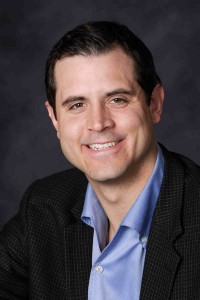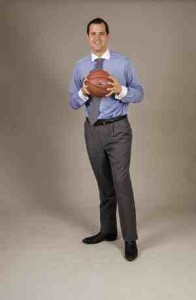6 Questions for C. Renzi Stone CEO and President of Saxum Pubic Relations
A visionary entrepreneur with strong public relations and public affairs expertise, Stone has grown his business from a one-person start-up in 2003 to a team of 19 full-time professionals. With an emphasis on excellence, Stone is focused on partnering with clients to provide strategic public relations services that achieve the client’s goals and objectives through creative, innovative communications. Because of his novel approach, this young entrepreneur has been named one of the “top 40 achievers under 40.” Here’s are some of the insights he shared with me.

1. Can you tell us bit about Saxum Public Relations, and how your “strategic and integrated public relations” approach differs from your competitors and early pioneers like Edward Bernays?
What a loaded and complicated question, but a good one! Since we are not writing a book, I’ll answer like any good public relations professional and give you three things to think about:
1. Good PR is about trust. Government and financial institutions (and I suppose Toyota, now) are saddled with high levels of public distrust. Massive government spending, a much-needed healthcare reform effort mired in politics and bonuses being paid to the recipients of taxpayer benevolence have created a distrusting public.
So, how do you gain trust?
I measure the success of any public relations campaign – the ultimate goal of which is to build trust – by asking three questions. Does this campaign benefit a larger community than ourselves? Is it authentic and unique? What is the worst thing that could happen? If I cannot answer those questions to my satisfaction, then we start over.
2. Spin is dead (but hasn’t been dead for long). Bernay’s looked at public relations as a drug for the masses. He thought that if you appeal to people’s natural instincts and cravings, you can ultimately persuade the public to action, even if the truth had not been taken into account. Although he may have been right in his day, that assertion is no longer accurate.
The proliferation of the internet has changed communications forever. Network news editors have taken a decidedly partisan stance on politics and business issues because that’s where the audience is. The days of trusting Walter Cronkite for the day’s news is over. Not because Mr. Cronkite was a poor journalist (he was excellent), but because the curious public receives information from many sources and has the ability to decide for themselves what “spin” is or is not. Responsible citizens today form their own opinions with the help of hundreds of thousands of sources. Determining “truth” has never been easier.
3. Integrated Public Relations Killed Advertising. The advertising financial model, bill creative – buy media, is finished. Advertisers no longer need an agency to do terrific creative. Further, the idea of the 15 percent commission for placing a five or six figure ad buy makes clients sick.
Public relations pros have their work cut out for them, too. The dinosaurs who sit around writing press releases and organizing events are a dying breed. The new PR pro is the right hand for the CEO. When called before Congress, it is our job to say, “lets drive instead of taking the jet.” It is our job to raise our hands when big bonuses are due after layoffs. It is our job to ask how an action affects the community and world around us.
2. What has been one of the most grueling “crisis communications” you’ve mitigated? And what strategies did you employ to alleviate or transform media attention?
In 2007, a crisis at Oral Roberts University became a national story when it was discovered that university president and televangelist, Richard Roberts, had used institution dollars improperly to fund a lavish lifestyle which, in-part, left the university with nearly $70 million in debt, threatening to close the doors of the college. In addition, lawsuits were threatened and filed by students, faculty and others. It was a mess.
Our client, the privately-owned retailer Hobby Lobby and the founding family, the Greens, offered to pay off the debt in its entirety, but only if the university met certain conditions. The conditions were simple. 1. Remove the entire Board of Regents. 2. Ask President Roberts to step down. 3. Adopt a new form of governance.
Our objective was to protect the family and win approval from the public for our conditions. Students, faculty and the general public were outraged by actions of the current administration. We waged a very transparent, public campaign touting the benefits of a new board of trustees (some of who ended up continuing their service under new guidelines), a new president and – most importantly – a new form of governance. We achieved each objective. We knew our conditions were tough, but we also knew it was the right thing to do.
3. How have you adapted new technologies into your PR strategy and communication planning? Have you leveraged the power of the semantic web and mobile for your media campaigns?
As I shared earlier, the days of writing press releases as a primary job for the PR pro is over. Leveraging social channels, high definition video, guerilla marketing and old-fashioned creativity is where we impress and get the best results. Authenticity is what breaks through the clutter, and the PR pro figures out how to find hard-to-reach audiences.
4. What is the future of PR? Do you think neuroscience will play a prominent role in changing public opinion?
I’m a PR guy, not a neuroscientist. Just kidding. I’m guessing this is a reference to Bernay’s uncle Sigmund Freud. Brain manipulation sounds like a narcissistic thing for Hollywood movie PR professionals, but it is not that sexy and certainly not achievable. The future of my industry is finding unique and creative ways to deliver a message. We have to be the social conscience of CEOs and protector of reputation for the brands we represent.
5. In your private life, you seem to possess a passion for politics and public service. How do social issues figure in your work? Does Saxum take on many cause-marketing related projects? If so, can you site some examples and the methodology you applied.
In 2009, Saxum won the Beacon Award, which recognizes a local company that helped the nonprofit community, for a $50,000 service grant that we gave to the Oklahoma City Museum of Art. Giving back to the community is a requirement to work for Saxum. If we do not positively impact the world around us, then we have missed one of the great expectations I believe God has created for our lives.
Politics and public service are a passion, but they are not private endeavors. It all connects, and it is part of what I love about my job and my life.

6. On a personal level, what is something people would be surprised to know about you?
Saxum means “large stone” in Latin. Get it? I also played in four NCAA basketball tournaments while starting at power forward and center for The University of Oklahoma men’s basketball team.
Heidi J. Boisvert, a 2010 We Media Fellow, is a new media artist, experimental filmmaker, writer and educator. She’s the Multi-Media Manager at Breakthrough, an international human rights organization. Heidi has also taught game design, documentary production and photography at various institutions and served as an educator and exhibition designer at the Museum of the Moving Image after many years working as a freelance editor, shooter and independent producer.



